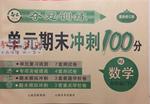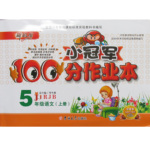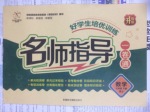15.Deep in the islands on the Andaman Sea,and along the west coast of Thailand live small tribes called the Moken people,also known as sea-nomads (海上牧民).Their children spend much of their day in the sea,diving for food.They are uniquely adapted to this job-because they can see underwater.And it turns out that with a little practice,their unique vision might be accessible to any young person.
In 1999,Anna Gislen at the University of Lund,in Sweden was delving different aspects of vision,when a colleague suggested that she might be interested in studying the unique characteristics of the Moken tribe.
Gislen and her six-year old daughter travelled to Thailand and lived within the Moken communities,who mostly lived on houses sat upon poles.Gislen set up an experiment to test just how good the children's underwater vision really was.The kids were excited about joining in.
The kids had to dive underwater and place their heads onto a panel(表盘).From there they could see a card displaying quite a few lines.Once they had stared at the card,they came back to the surface to report where the lines travelled Each time they dived down,the lines would get thinner,making the task harder.It turned out that the Moken children were able to see twice as well as European children who performed the same experiment at a later date.
Gislen figured that in order to see clearly underwater,the Moken children must have either picked up some adaptation that completely changed the way their eyes worked,or they had learned to use their eyes differently under water.
28.Why are the Moken people known as sea-nomads?C
A Because they live on the coast of the Andaman Sea.
B.Because they like to dive into the sea to play.
C.Because they depend on the sea for food
D.Because they raise sea animals themselves.
29.What does the underlined word"delving"in Paragraph 2 most probably mean?A
A Doing research on
B.Showing interest in
C.Taking care of.
D.Catching hold of.
30.What did the children report when they came back to the surface?B
A.The number of lines they saw underwater.
B.The direction in which the lines travelled
C.How much thinner the lines had become
D.Whether the lines were straight or not
31.What could be the best title for the text?A
A.Children who can see underwater
B.People who depend on the sea for food
C.People who live on houses sat upon poles
D.Children who change the way their eyes develop.
分析 本文是一篇社会文化类阅读,属于说明文,文章主要讲述了被称作"海上牧民"的莫肯人,他们的孩子梢加训练就会有奇特的视力,能够在海底看到东西.
解答 28.C.推理判断题.根据第1段"…also known as sea-nomads.Their children spend much of their day in the sea diving for food"可知,他们被称为"海上牧民"因为白天大部分时间孩子们都在海里寻找食物.故选C.
29.A.词义推测题.根据下文的"…he might be interested in studying the unique characteristics of the Moken tribe"以及下文她所做的实验可知,该词的意思应该是"研究".故选A.
30.B.细节理解题.根据第4段"Once they had stared at the card.they came hack to the surface a report where the lines travelled"可知,孩子们应该说明线运行的方向.故选B.
31.A.主旨大意题.文章主要讲述了被称作"海上牧民"的莫肯人,他们的孩子梢加训练就会有奇特的视力,能够在海底看到东西.故选A.
点评 本文是一篇社会文化类阅读,题目涉及多道细节理解题,推理判断题,词义推断题,主旨大意题.做题时学生应仔细阅读原文,把握文章主要内容,联系文章上下文内容并结合所给选项含义,从中选出正确答案,一定要做到有理有据,切忌胡乱猜测.



 夺冠训练单元期末冲刺100分系列答案
夺冠训练单元期末冲刺100分系列答案 新思维小冠军100分作业本系列答案
新思维小冠军100分作业本系列答案 名师指导一卷通系列答案
名师指导一卷通系列答案